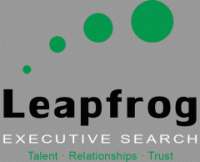Talent Management or Leader Engagement?
Category : 2016
When did taking responsibility for developing people in an organization and creating a succession of talent that is prepared to assume greater leadership responsibility give a leader the unique distinction of a “superboss?”
In his insightful and well-researched book, Superbosses: How Exceptional Leaders Manage the Flow of Talent, Sydney Finkelstein, the Steven Roth Professor of Management and Director of the Leadership Center at the Tuck School of Business at Dartmouth investigates the behaviors of those he identified as the most effective leaders. Finklestein found these “superbosses”-
- Focus on intelligence, creativity, and flexibility in hiring
- Adapt the job to fit the talent
- Accept that great talent will move up or out of the company
- Set high expectations
- Aren’t afraid to delegate
- Continue mentoring after the emerging leader leaves the organization
Isn’t that list the foundation for effective talent management in any organization? Finding great talent while coaching and mentoring people to greater levels of performance is fundamental to any level of success in talent and performance management. Mercer underscored the core issue when their survey of 2500 managers in 1,000 companies found that over half of the employers gave managers a “C” or below in their ability to help people improve performance.
It appears that some executives think our fumbles on the gridiron of talent management are organizational failures rather than leadership failures. Deloitte’s 2016 Global Human Capital Trends report opens with, “After three years of struggling to drive employee engagement and retention, improve leadership, and build a meaningful culture, executives see a need to redesign the organization itself . . . ”
While organizational design should support finding, growing, and moving up great talent, organizational processes won’t compensate for a lapse in leadership. The Deloitte report goes on to say the HR function is being charged with the role of steward and designer of the processes needed to create this organization of the future. HR leaders need to be careful they do not sign up to provide a well-crafted solution for the wrong problem, only to again be viewed as unable to “understand the business.”
Industry leaders like Bain, McKinsey, and Google begin the talent management process at recruitment, announcing on their websites the qualities they look for in candidates-passion, entrepreneurial drive, innovation, leadership, a bias toward action, and problem solving abilities. But adopting the targeted abilities or HR processes of another company isn’t the path to dynamic talent management. Trying to bring passionate and innovative talent into an organization where the behaviors (culture) of leaders won’t encourage and support the development of that talent will create a churn of great people that will be difficult to manage and a serious blow to a corporate brand.
Managing talent for the present-and the future, is addressed most effectively when it is first approached as a leadership issue, not a problem with organizational design or ineffective HR processes.
